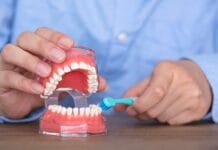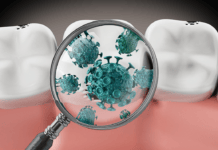Ahh, the holidays. We love them and look forward to them each year. They start as early as October when ghost, goblin, and pumpkin-decorated sweet treats are passed around to celebrate All Hallows’ Eve. Some trick-or-treating plans are even made based on which neighborhoods pass out the best candy (Don’t act like you don’t do the same). Perhaps they know exactly which neighborhood passes out the full-size candy bars.
After Halloween, it’s all the fall fun, and pumpkin spiced everything. Thanksgiving is a literal smorgasbord of all things yum and delectable.
Next up, Christmas, Hanukkah, Kwanzaa, and others! For some, we literally start the December holiday season the day after Thanksgiving with Black Friday folly, fueled by peppermint mocha or vanilla gingerbread lattes. Party schedules are carefully planned so as not to overlap and miss one ‒ school parties, neighborhood parties, church parties, friend parties, and office parties, you name it!
At each and every one of these parties, we are surrounded by decadent and delicious delicacies (yay for alliteration). It’s hard to resist. Even with a Herculean effort, we sometimes give in. Your sister-in-law who makes a certain cookie only for Christmas ‒ that’s it, literally, no other time during the year. Of course, you’re going to try one or five.
New Year’s Eve is yet another party with all the eats and all the drinks. Before we know it, it’s January 1, and we have been going rogue for three months. That’s a quarter of the year. We have been slipping for a quarter of a year!
The Party’s Over
After all this fun, the waistline is not the only thing that needs to get back in check – the oral microbiome does as well. All that snacking and cocktailing has done a number on the oral microbiome. Many patients are not aware their mouths could have been affected by this change in diet.
Clinically, every year after the holidays, I would see patient biofilms look less healthy than usual under the microscope. When talking with patients, they all reported similar stories. They have been off their normal oral hygiene routine because of the hustle and bustle. For example, they traveled and forgot their electric brush. They also reported dietary changes that included more processed foods and higher than usual alcohol consumption. In addition, they typically reported added stress and less sleep than normal.
All of this is the perfect storm for disease. It’s time to whip it back into shape.
Dental Gym
As dental hygienists, it is our job to help patients restore their oral health through not only treatment but education for the prevention of further disease. This time of year, think of yourself as a trainer ‒ not the weight lifting and protein shake kind ‒ but the biofilm boot camp kind.
Assess the patient and guide them in an individualized, clear path back to a healthy oral microbiome. This is done all the time during hygiene appointments. However, it can’t be stressed enough during the holidays.
Discussing patients’ lifestyles and habits over the holidays is important when making a plan to achieve optimal oral health. Here are three key components to discuss with patients to get the oral microbiome back to a healthy state.
1) Daily oral hygiene
This is our area of expertise, but some patients really don’t know how to adequately clean their mouths each day. Sometimes, it’s good to go back to the basics and, step by step, show the patient how to brush and clean interdentally using the proper technique. Explain how an electric toothbrush works and how it is the “work smarter, not harder” method.
The proper disruption of biofilm in a timely manner also needs to be stressed so the late-stage, more pathogenic bacteria are not allowed to hang around long enough to cause disease.
2) Nutrition
Nutrition is a subject all hygienists were educated on in school, but for some reason, we tend to shy away from this fundamental portion of good oral health. Hygienists are educated on what a healthy, nutritious diet is, but you don’t have to be a certified dietician.
Discuss with patients how a healthy diet nourishes teeth and supporting structures in addition to cultivating a healthy microbiome. Explain to patients that they can feed or starve whatever bacteria they want in their mouth through diet. Good bacteria want whole, unprocessed foods and bad (pathogenic) bacteria love and thrive on sugar and processed foods.1
Encourage patients to take note of what they eat in a day and challenge them to see if they can go a whole day without eating anything that comes in a paper or plastic container. If they have never done this, it may be harder than they realized. If nothing else, it makes people stop and take notice of what they put in their mouths on an average day.
3) pH
Some patients may not know the importance of pH in the mouth. Explain to patients that the mouth needs to be neutral (7.0 pH) to help prevent disease.2 Discuss how drinks like sodas, juices, and some energy drinks are very acidic and contain huge amounts of sugar. This not only feeds bad bacteria but makes the mouth even more acidic once metabolized.
Once the pH drops to 5.5, this is when enamel starts to demineralize, and decay can form.3 Explain to patients that periodontal pathogens also thrive in a more acidic environment, so keeping the mouth neutral helps prevent both decay and periodontal disease. Feel free to give them healthier food and drink suggestions that are less acidic.
In Closing
The good news is even after the imbalance otherwise healthy biofilms have sustained over the holidays, the body’s microbiome has the ability to heal. Some small, day-to-day adjustments can make a big difference and have a huge impact on patients’ oral health. Before they know it, their oral microbiome will be back in tip-top shape.
Before you leave, check out the Today’s RDH self-study CE courses. All courses are peer-reviewed and non-sponsored to focus solely on high-quality education. Click here now.
Listen to the Today’s RDH Dental Hygiene Podcast Below:
References
- Santonocito, S., Giudice, A., Polizzi, A., et al. A Cross-Talk between Diet and Oral Microbiome: Balance of Nutrition on Inflammation and Immune System’s Response During Periodontitis. Nutrients. 2022: 14(12): 2426. https://www.ncbi.nlm.nih.gov/pmc/articles/PMC9227938/
- Baliga, S., Muglikar, S., Kale, R. Salivary pH: A Diagnostic Biomarker. Journal of Indian Society of Periodontology. 2013: 17(4): 461-465. https://www.ncbi.nlm.nih.gov/pmc/articles/PMC3800408/
- Bowen, W.H. The Stephan Curve Revisited. Odontology. 2013: 101(1): 2-8. https://pubmed.ncbi.nlm.nih.gov/23224410/












